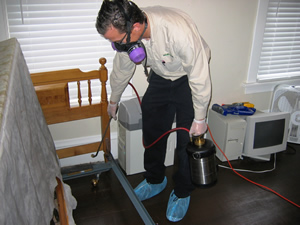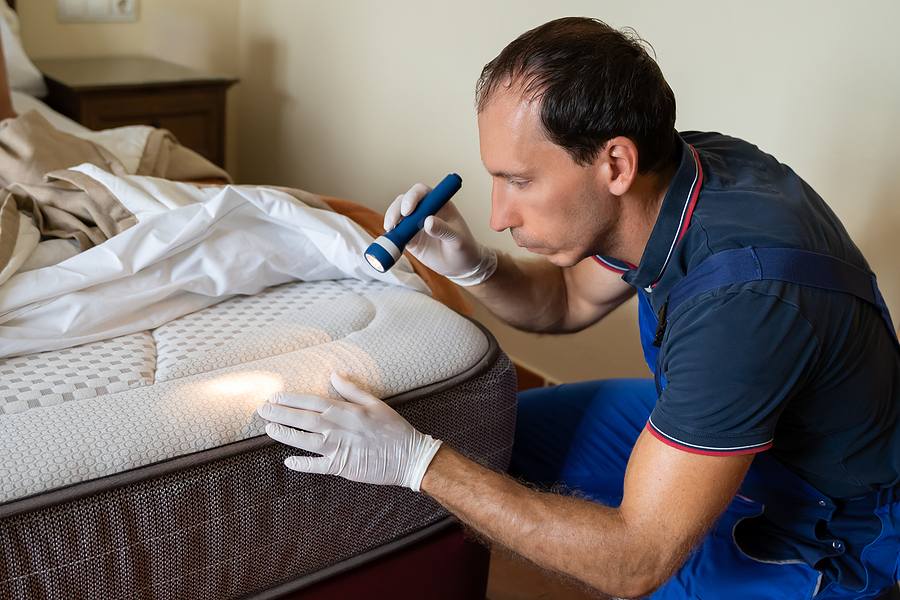Effective Bed Bug Exterminator: DC Solutions with Heat Treatment
Effective Bed Bug Exterminator: DC Solutions with Heat Treatment
Blog Article
Discovering the Scientific Research Behind Bed Pest Warmth Treatments as a Lasting Pest Monitoring Approach
In the realm of parasite administration, the quest for lasting and reliable solutions continues to be a constant quest. One such method that has gained grip in recent times is the usage of warmth therapies to battle bed pest problems. By harnessing the scientific research behind thermal death factors for these consistent bugs, heat therapies supply a promising option to traditional chemical-based techniques. The ins and outs of how warm properly gets rid of bed pests and the more comprehensive implications for lasting parasite management practices make this a subject worth checking out further.
Bed Insect Warmth Therapy Refine

Thermal Death Point for Bed Insects
Revealing bed insects to raised temperatures beyond their thermal tolerance range is important for accomplishing effective obliteration in warm therapy processes. The thermal death point for bed pests refers to the temperature at which these parasites can not make it through. Study indicates that bed insects begin to perish when subjected to temperature levels above 113 ° F(45 ° C) for a continual duration. As the temperature boosts, so does the death rate of bed insects. At around 118 ° F(48 ° C ), bed pests start to die quickly, with a death price of nearly 99% within minutes of direct exposure. This demonstrates the sensitivity of bed insects to high temperature levels and highlights the effectiveness of warm therapies in getting rid of infestations. By reaching and preserving temperature levels over the thermal fatality point for bed bugs, parasite administration experts can guarantee thorough removal of bed insect populations, consisting of hard-to-reach locations where chemical therapies may be much less effective. Comprehending the thermal death factor for bed bugs is important for carrying out successful heat therapy techniques and accomplishing sustainable parasite management results.
Benefits of Heat Treatments
Having established the critical thermal death factor for bed pests, it is vital to currently check out the substantial benefits that heat therapies offer in effectively getting rid of these durable parasites. One of the primary benefits is that warmth can pass through deep right into cracks and gaps where bed insects hide, guaranteeing that also the most hard-to-reach locations are heated to dangerous temperatures.
Additionally, warm therapies are safe and eco friendly, making them a lasting bug monitoring technique. Unlike chemical pesticides, warm therapies do not leave dangerous deposits that can position risks to human wellness or the setting. This facet is specifically vital in sensitive environments such as healthcare facilities, schools, and domestic areas where chemical usage might not be desirable.
Additionally, warm treatments have a high success rate in getting rid of bed insect invasions in a single treatment, lowering the weblink demand for multiple visits and decreasing disturbance to occupants. This effectiveness not just saves time and money but also offers tranquility of mind to those dealing with bed pest problems.
Performance of Warmth Treatment

Research study studies have continually demonstrated the efficiency of warmth treatments in accomplishing a high price of bed insect mortality. Appropriately performed warm treatments can get to all the holes and splits where bed insects may be nurturing, making certain a detailed approach to extermination. Heat treatments have actually the added benefit of killing bed bug eggs, which are commonly immune to conventional chemical therapies. In general, the effectiveness of warm treatments in eradicating bed insect infestations makes them a dependable and sustainable parasite management technique.
Sustainable Insect Monitoring Perks
Applying sustainable bug monitoring practices offers long-lasting benefits for both the setting and public health and wellness. By using methods such as warmth treatments for pest control, we can decrease the dependence on unsafe chemical pesticides that can have unfavorable impacts on ecological communities and human wellness - DC exterminator. Lasting parasite administration techniques aid in protecting biodiversity by targeting certain parasites without harming non-target organisms, thus keeping a well balanced environment
Furthermore, sustainable pest management techniques add to the total health and wellness and health of the general public. By decreasing exposure to poisonous chemicals used in traditional insect control methods, warm treatments supply a safer option for parasite administration in property, industrial, Check This Out and public rooms. This decrease in chemical usage also helps in preventing pesticide deposits from contaminating air, soil, and water, protecting ecological top quality.
Conclusion
Finally, bed pest heat treatments have been shown to be a efficient and lasting insect administration method. The thermal fatality factor for bed pests makes them prone to heat therapies, which have numerous advantages over standard chemical therapies. The effectiveness of warm treatments in eliminating bed bug problems while lessening environmental influence highlights the potential of this additional resources approach as a sustainable remedy for insect control.
The bed insect heat therapy procedure entails increasing the temperature within ravaged areas to a degree that efficiently removes bed insects and their eggs. By reaching and maintaining temperature levels over the thermal death point for bed bugs, parasite administration professionals can ensure thorough elimination of bed insect populations, including hard-to-reach areas where chemical treatments might be less effective. One of the key advantages is that warmth can permeate deep right into crevices and splits where bed pests hide, guaranteeing that even the most hard-to-reach locations are heated up to deadly temperature levels. Unlike chemical therapies that may leave behind immune populations, warmth treatments use a non-toxic and eco pleasant service that can pass through deep right into furnishings, walls, and various other hard-to-reach locations where bed insects hide.
The thermal death point for bed bugs makes them vulnerable to heat treatments, which have many advantages over conventional chemical treatments.
Report this page